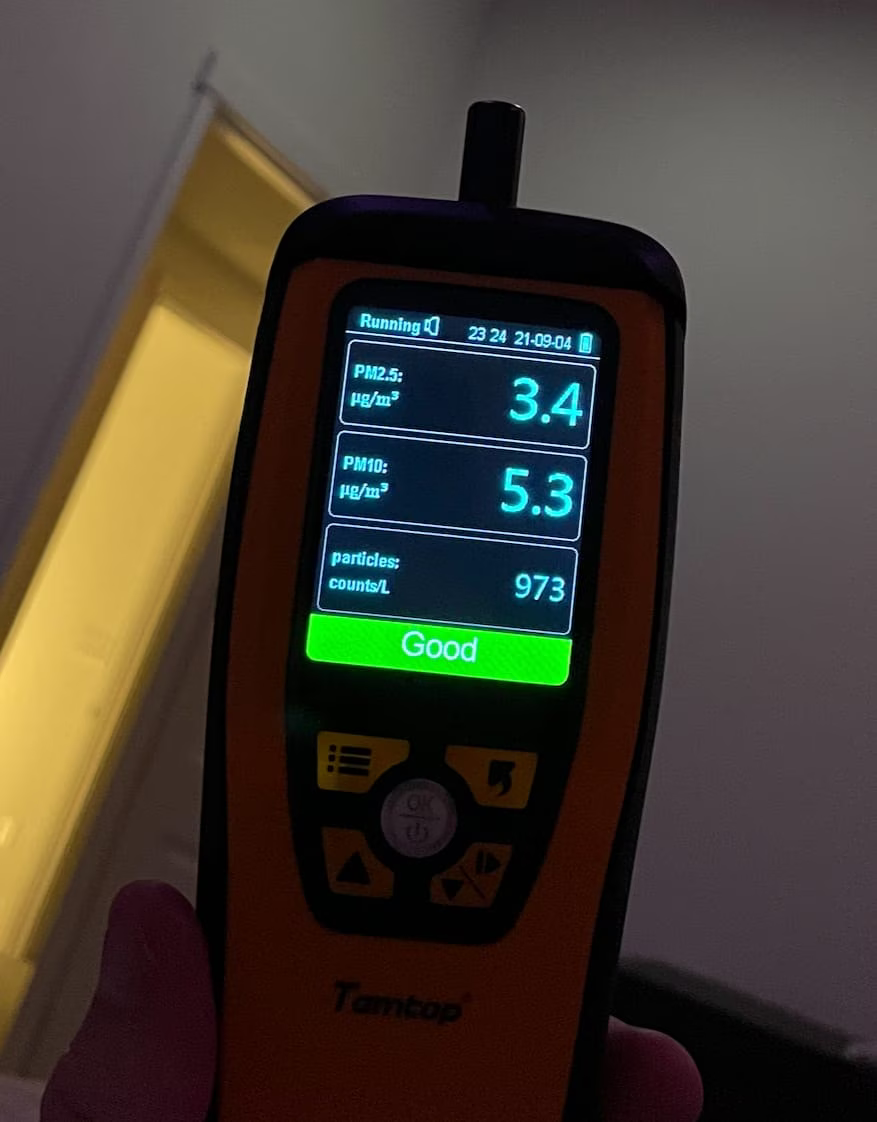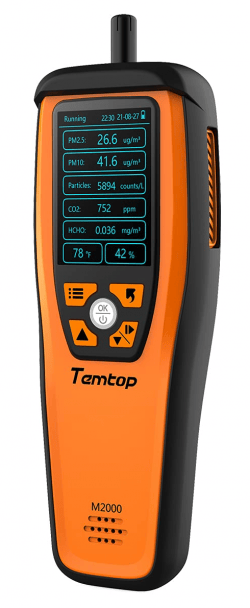Geeking Out on Air Quality Measurement

I have a friend who’s a water snob. He convinced me to get a 6-stage Reverse Osmosis Water Filtering System from iSpring >, which I love, by the way. But that’s a separate talk show.
No, I’m unfortunately not being paid for any of these recommendations. They’re just what I have.
Anyway, I’m in the Bay Area and have had too many days of an orange sun from massive air pollution. I’ve always wondered about air quality and air filters, but after buying a new house I put in an additional filter on the AC and spent a bunch on Coway Purifiers > and a single Molekule Air Pro >.
This was nice, and it made me feel good placebo-wise, but eing a nerd I still wondered about efficacy. Like how much do these purifiers really make a difference? I’ve had some low-level sensors for years, like from Eve. But they always seemed like more of a piece-of-mind gimmick than anything else. I tried similar consumer sensors and ended up with drastically different readings from three of the same exact model. Garbage.
Then when Googling whether purifiers really worked, I ended up on YouTube where I saw someone using a Temtop Air Quality Tester, so I ended up buying the M2000 model > from them.

The Temtop M2000 Air Quality Monitor
This thing is legit.
If I put it in a room with no extra air filter for a few seconds, the air quality goes up to like 12 in PM 2.5, which is basically parts per million of particles below 2.5 micrometers in size. PM 10 is 10 micrometers, etc.
If I turn on an air filter and come back in several minutes (depending on room size), it’ll end up at like a quarter or a third of that. And if I put the sensor right near the filter, the air registers as extremely clean within a few seconds.
Farts produce the opposite. It’s quite satisfying. I can literally fart under the covers, bring the sensor under the Dutch Oven cover, and the thing will actually alarm!
It’ll turn from green to orange and start beeping at me. It’s glorious. Incidentally, this is the same thing that happens if I take it into my garage or outside. It starts beeping within seconds as the air becomes many times worse.
So the other thing this thing does is CO2 testing, which I also find super interesting. There’s basically this balance between oxygen and CO2 in the air, and humans and plants have opposite roles. Humans breathe oxygen and put out CO2. Plants consume CO2 and put out oxygen.
And I love plants.
So naturally, I want to get a whole bunch of high-surface-area houseplants and improve the air quality even more in the house. On top of the central air filter and the extra purifiers.
Supposedly, plants can remove toxins as well as lower the CO2 in the house. But I’m highly skeptical of how much difference they can actually make just due to the amounts of plant surface area vs. the amount of air in a house.
Plants have been shown conclusively to remove CO2, but those tests were done in these tiny little enclosed lab areas. I am not sure that’s going to translate to the real world.
So what I’m about to do is use this utensil to test the before and after CO2 levels in the house. I’m getting measurements now, and then I’ll get more measurements after I put like 10 plants in the house. I like plants.
The other sensor it has is for Formaldehyde, which I’m not overly concerned about.
Anyway, enthused to have a new toy that can actually measure the efficacy of using air filtration and house plants to improve the air in your house. You can get them for like $100, and mine was like $200.
If you’re inclined to geekery, I recommend dabbling.